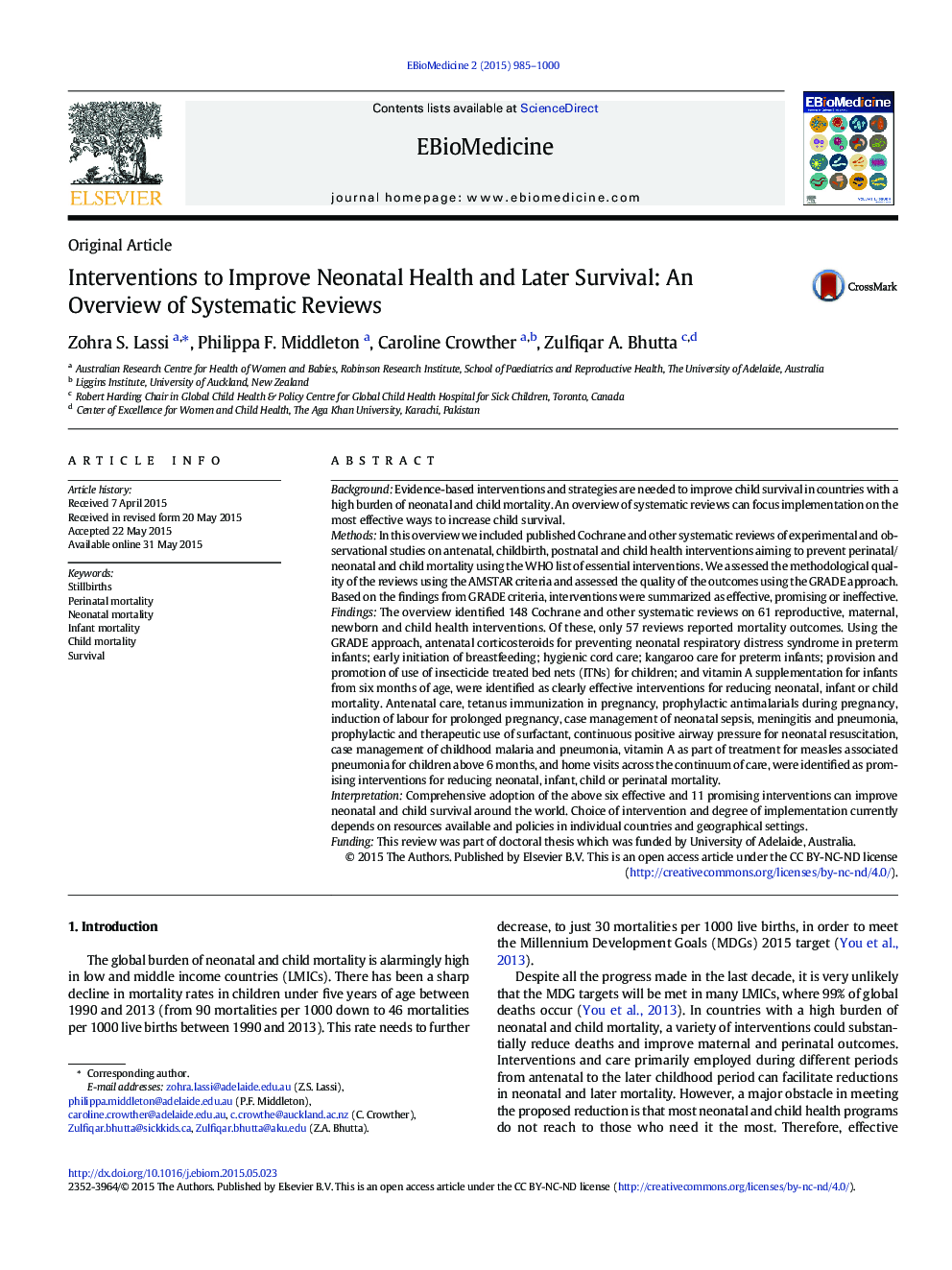| کد مقاله | کد نشریه | سال انتشار | مقاله انگلیسی | نسخه تمام متن |
|---|---|---|---|---|
| 2121133 | 1085769 | 2015 | 16 صفحه PDF | دانلود رایگان |
• There are several interventions have showing clear impact on improving neonatal and child survival.
• The most effective include antenatal-corticosteroids, breastfeeding, cord care, kangaroo care, bednets, and vitamin A.
• Countries with high burdens of neonatal and child mortality need to find ways to effectively implement these interventions.
BackgroundEvidence-based interventions and strategies are needed to improve child survival in countries with a high burden of neonatal and child mortality. An overview of systematic reviews can focus implementation on the most effective ways to increase child survival.MethodsIn this overview we included published Cochrane and other systematic reviews of experimental and observational studies on antenatal, childbirth, postnatal and child health interventions aiming to prevent perinatal/neonatal and child mortality using the WHO list of essential interventions. We assessed the methodological quality of the reviews using the AMSTAR criteria and assessed the quality of the outcomes using the GRADE approach. Based on the findings from GRADE criteria, interventions were summarized as effective, promising or ineffective.FindingsThe overview identified 148 Cochrane and other systematic reviews on 61 reproductive, maternal, newborn and child health interventions. Of these, only 57 reviews reported mortality outcomes. Using the GRADE approach, antenatal corticosteroids for preventing neonatal respiratory distress syndrome in preterm infants; early initiation of breastfeeding; hygienic cord care; kangaroo care for preterm infants; provision and promotion of use of insecticide treated bed nets (ITNs) for children; and vitamin A supplementation for infants from six months of age, were identified as clearly effective interventions for reducing neonatal, infant or child mortality. Antenatal care, tetanus immunization in pregnancy, prophylactic antimalarials during pregnancy, induction of labour for prolonged pregnancy, case management of neonatal sepsis, meningitis and pneumonia, prophylactic and therapeutic use of surfactant, continuous positive airway pressure for neonatal resuscitation, case management of childhood malaria and pneumonia, vitamin A as part of treatment for measles associated pneumonia for children above 6 months, and home visits across the continuum of care, were identified as promising interventions for reducing neonatal, infant, child or perinatal mortality.InterpretationComprehensive adoption of the above six effective and 11 promising interventions can improve neonatal and child survival around the world. Choice of intervention and degree of implementation currently depends on resources available and policies in individual countries and geographical settings.FundingThis review was part of doctoral thesis which was funded by University of Adelaide, Australia.
Journal: EBioMedicine - Volume 2, Issue 8, August 2015, Pages 985–1000
